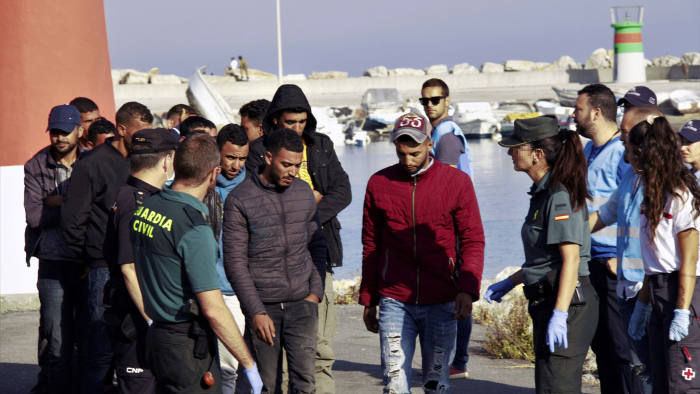Financial Times
A decade after Spain faced economic crisis, prompting hundreds of thousands of people to flee the country, its population has reached its highest ever level as immigrants and returning locals flood into the eurozone’s fastest growing major economy.
Strong economy lures workers from other European nations, including Italy.
Spain’s population grew by 276,000 people in 2018 to nearly 47 million, its national statistics agency reported on Tuesday — the fastest annual increase since 2009. The rise came largely from immigration, both from traditional sources in Latin America and Morocco as well as other European countries. “It’s comparable to the intense arrival wave in the early years of the 2000s,” said Carmen González, a senior analyst in migration issues at Madrid’s Elcano Royal Institute.
The population growth marks a stark contrast to the years after the crisis — in the four years to 2016, Spain’s population declined by nearly 400,000 people. The fall reflected the severity of the crisis that hit the Iberian nation: between 2008 and 2013 the Spanish economy shrank by nearly 10 per cent. At the end of 2013, more than one in four persons of working age was unemployed; nearly 60 per cent of those under 25 who were seeking a job could not find one.
Now Spain is more than four years into a strong economic recovery. The improving picture in the labour market helps explain the migration inflow and the fall in emigration by Spaniards, said Ms González. More Spaniards returned home than left the country last year, for the first time in at least seven years. Spain’s economy has been expanding faster than the eurozone average since 2015 and it is expected to continue to do so this year. Economists’ forecasts, averaged by Consensus Economics, suggest Spain’s output will rise by 2.3 per cent this year, double the eurozone average.
Job creation has run at an annual average of two per cent for the last four years, and the country has become a destination for migrants from countries such as Italy and Portugal. The number of Italians living in Spain rose by 10 per cent in 2018 to 244,000, while the number of Portuguese rose by 3 per cent — in both cases, the largest increase since the crisis. “Italy’s economy has been stagnant for many years and its labour market is a disaster,” said Marcel Jansen, professor of economics at the Autonomous University of Madrid.
“Professionally speaking, Spain is a much easier country to construct a decent career, and it shares many of the virtues of the Mediterranean life.” “Everybody loves Italy and has an idea of it, as a place to go on vacation,” said Chiara Grassilli, who moved to Madrid in 2017 after five years in London. “But when it comes to living there, the professional opportunities are very limited. For people with masters degrees, who speak several languages, it’s not worth staying.” Ms Grassilli, a sales adviser for an internet marketing software firm, said that “Madrid . . . is becoming a very international city. Professionally you have a lot of opportunities”.
The largest group to arrive in Spain in 2018 came from Spanish-speaking countries in Latin America — most notably Venezuela — who can apply for citizenship after two years of legal residency. While Spain’s increasing population attests to its new-found economic strength, some analysts say the country has failed to develop labour market policies that would help attract highly qualified workers, moving its economy away from dependence on tourism and other low-skilled service sectors.
“There is a serious issue with the lack of qualified personnel and the ability of Spain to retain talent,” said Mr Jansen. “Spain basically does not have an immigration policy.”







